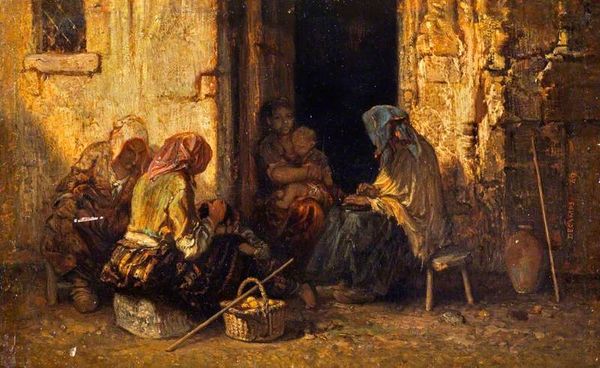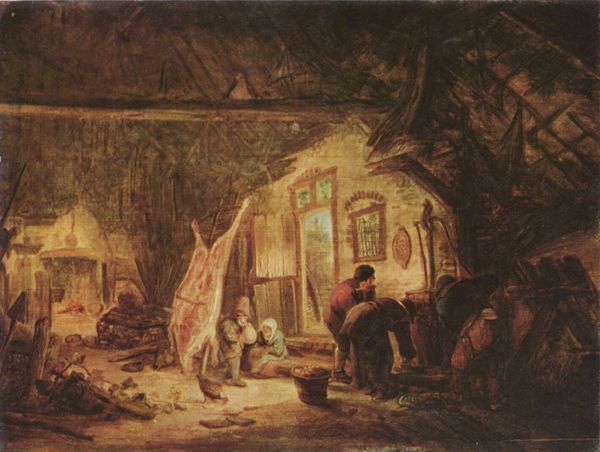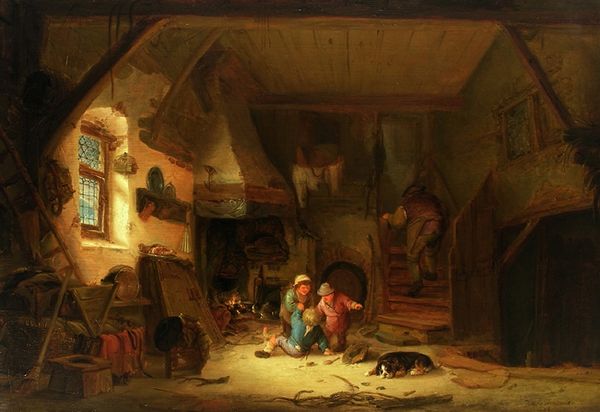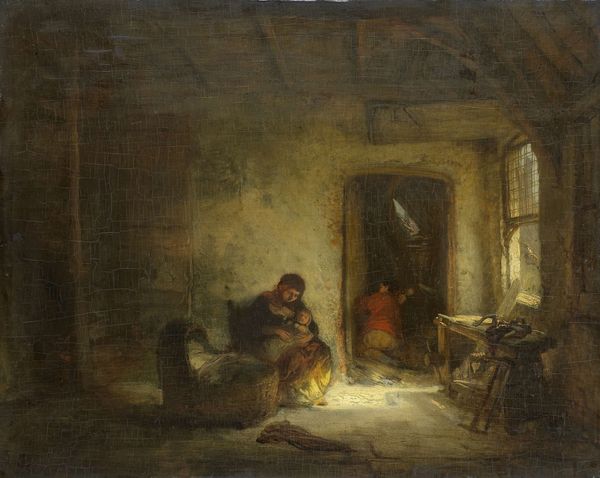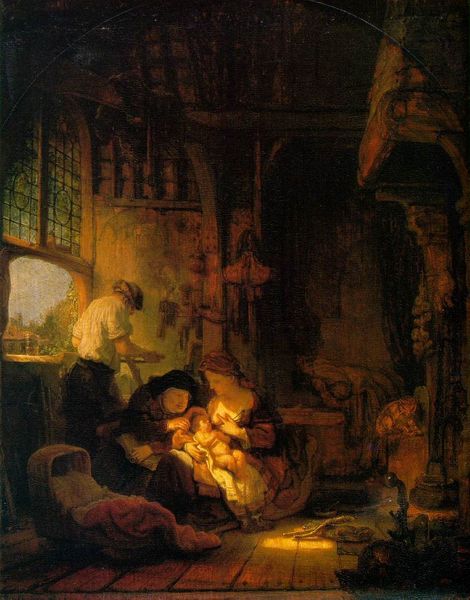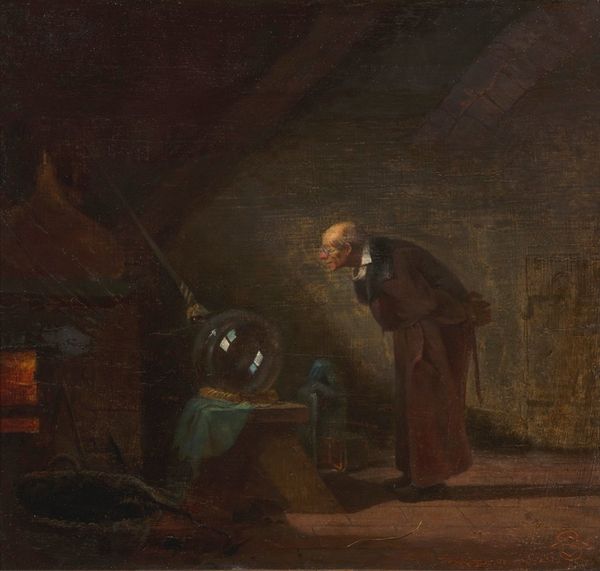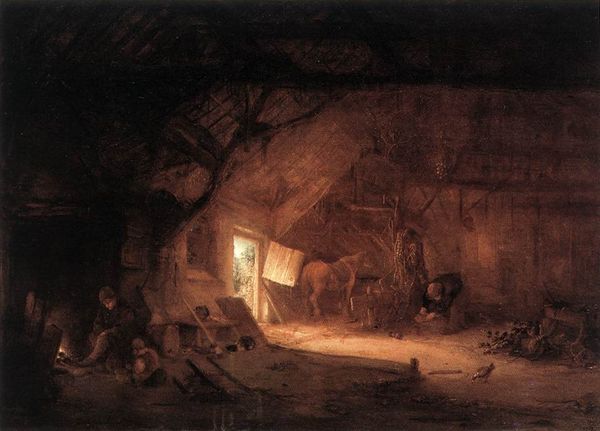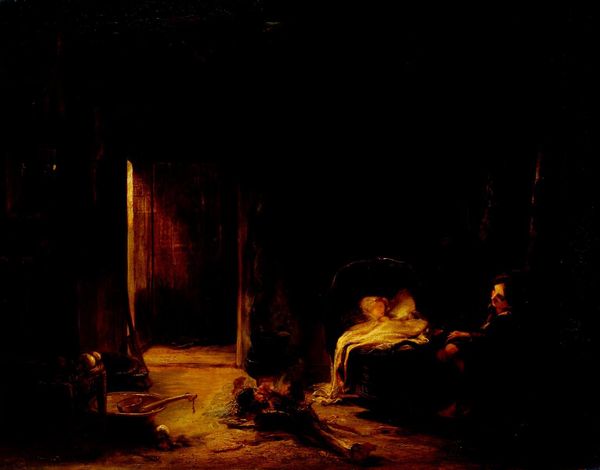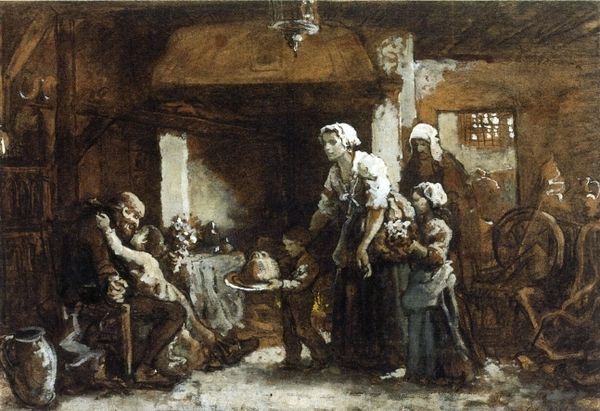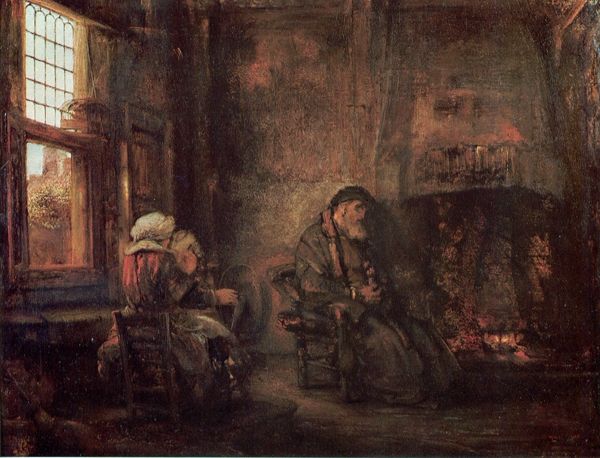
painting, oil-paint
#
painting
#
oil-paint
#
sculpture
#
landscape
#
genre-painting
#
history-painting
#
realism
Copyright: Public domain
Editor: Eastman Johnson's "Kitchen at Mount Vernon," painted in 1857, is really evocative. The oil paint creates such a warm, almost sepia-toned effect, and I'm struck by the contrast between the figures in the foreground and the depth of the room. What do you see in this piece, looking at the cultural memory embedded in the work? Curator: The hearth, the central image, operates as both a physical space and a symbol of home and domesticity, especially when one considers its location at Mount Vernon. How do you see that symbolic space inhabited by the figures, in relation to its history? Editor: Well, I notice the figures by the fire... two children and an adult woman. To me, it highlights the intimate everyday moments within this historical site. There’s a sense of warmth and comfort emanating from their presence. Curator: Yes, the image draws us into this warmth, doesn't it? Consider the light—notice how it focuses primarily on the figures by the fireplace, but then recedes into darker recesses. How might we read those gradations of light and shadow, given the historical context? Think of it not only in terms of artistic technique, but as a conscious highlighting and obscuring of different narratives at play within Mount Vernon's complicated legacy. Editor: That makes me think about what’s *not* illuminated here – the open doorway, the implication of other rooms, other stories not being told. It definitely adds another layer. I hadn’t considered that aspect before. Curator: The objects and architectural space of the room serve as symbolic carriers of that historical narrative. Reflect on how artists in the 19th century engaged with national identity. The “Kitchen” invites contemplation on the labor and lives intertwined with the mythology of a place like Mount Vernon. What do you make of Johnson choosing *this* subject to paint? Editor: It’s definitely not the grand facade or the famous study – choosing the kitchen really personalizes history. I guess the impact of the imagery of the domestic lives gives new depth. Curator: Exactly! And understanding those choices unveils so much.
Comments
No comments
Be the first to comment and join the conversation on the ultimate creative platform.
